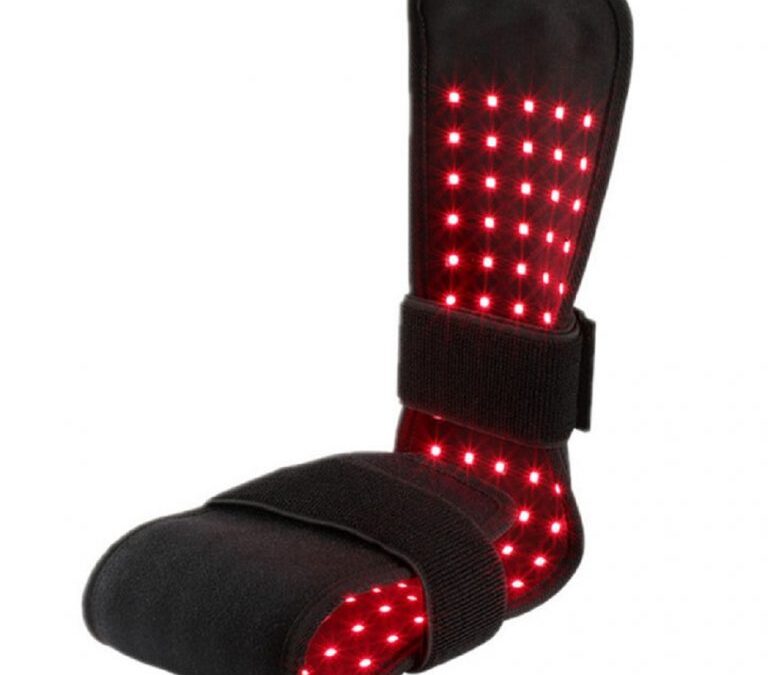Introduction to Neuropathy and its Symptoms
Neuropathy, a condition resulting from damage to the peripheral nerves, causes a variety of symptoms that can significantly impact quality of life. Commonly experienced as tingling, numbness, and pain, neuropathy often affects the hands and feet and can stem from various causes, including diabetes, chemotherapy, and physical injury. Patients suffering from neuropathy are constantly seeking effective treatments to alleviate their discomfort and improve their daily living. One emerging therapy that’s garnering attention is red light LED therapy.
Explanation of Red Light Therapy and How it Works
Red light therapy, also known as photobiomodulation or low-level laser therapy (LLLT), involves the use of specific wavelengths of red light (typically between 620 nm and 750 nm) to penetrate the skin and underlying tissues. This non-invasive treatment aims to stimulate cellular function, enhance blood flow, reduce inflammation, and promote healing. The therapeutic process works by delivering light energy to the cells, which is then converted into cellular energy, boosting the body’s natural healing processes.
Red light therapy’s potential benefits are rooted in its ability to enhance mitochondrial function, the powerhouse of the cell. By increasing adenosine triphosphate (ATP) production, red light therapy helps repair damaged cells and promotes overall tissue regeneration.
Studies and Evidence on the Effectiveness of Red Light Therapy for Neuropathy
Numerous studies have investigated the efficacy of red light therapy for neuropathy, providing promising results:
- Diabetic Neuropathy: Research has shown that red light therapy can significantly reduce pain and improve the quality of life for patients with diabetic neuropathy. Enhanced circulation and cellular repair mechanisms help mitigate the nerve damage caused by high blood sugar levels.
- Chemotherapy-Induced Peripheral Neuropathy (CIPN): Studies indicate that red light therapy can alleviate symptoms associated with CIPN. Patients receiving red light therapy reported reduced pain, improved sensation, and better overall function.
- Peripheral Neuropathy: General studies on peripheral neuropathy patients have demonstrated that red light therapy can reduce pain, improve nerve function, and enhance mobility. These results have been attributed to the anti-inflammatory effects and increased blood flow induced by the treatment.
While more research is needed to fully understand the long-term effects and optimal protocols, current evidence suggests that red light therapy holds significant potential as a treatment for neuropathy.
Real-life Testimonials from Neuropathy Patients
Hearing directly from those who have benefited from red light therapy can be incredibly encouraging for neuropathy patients considering this treatment option:
- John D., Diabetic Neuropathy Patient: “After struggling with diabetic neuropathy for years, I decided to try red light therapy. Within a few weeks, I noticed a substantial reduction in my foot pain. It’s been a game-changer for me.”
- Mary S., Chemotherapy Survivor: “Chemotherapy left me with debilitating neuropathy in my hands and feet. Red light therapy helped reduce the burning sensation and restored some of my lost sensation, allowing me to enjoy life again.”
- James L., Peripheral Neuropathy Sufferer: “I was skeptical at first, but after consistent use of red light therapy, my chronic pain diminished, and I regained mobility. I highly recommend it to anyone dealing with neuropathy.”
Tips on Using Red Light Therapy at Home
For those interested in trying red light therapy at home, here are some practical tips:
- Choose the Right Device: Ensure you purchase a high-quality red light therapy device from a reputable manufacturer. Look for devices that emit wavelengths between 620 nm and 750 nm for optimal results.
- Follow a Consistent Schedule: Regular use is key to experiencing the benefits of red light therapy. Aim for sessions lasting 10-20 minutes, several times a week, depending on the severity of your symptoms and the manufacturer’s recommendations.
- Target Affected Areas: Focus the red light on the areas most impacted by neuropathy. Ensure the light penetrates the skin by holding the device close to the targeted area.
- Practice Patience: While some patients report immediate relief, it may take a few weeks or months for others to notice significant improvements. Consistency and patience are crucial.
- Consult Your Healthcare Provider: Always consult your doctor before starting any new treatment, especially if you have underlying health conditions or are taking medication.
Conclusion: The Future of Red Light Therapy for Neuropathy
The future of red light therapy for neuropathy looks promising, with growing evidence supporting its effectiveness in reducing pain, improving nerve function, and enhancing the quality of life for patients. As research continues to unveil the potential benefits and refine treatment protocols, red light therapy could become a mainstream option for neuropathy management.
If you or someone you know is struggling with neuropathy, consider exploring the benefits of red light therapy. With its non-invasive nature and potential for significant relief, it might just be the solution you’ve been searching for. Always remember to consult with your healthcare provider before starting any new treatment regimen.
Stay informed, stay hopeful, and take proactive steps towards regaining control over your neuropathy symptoms. Here’s to a brighter, pain-free future with red light therapy!


